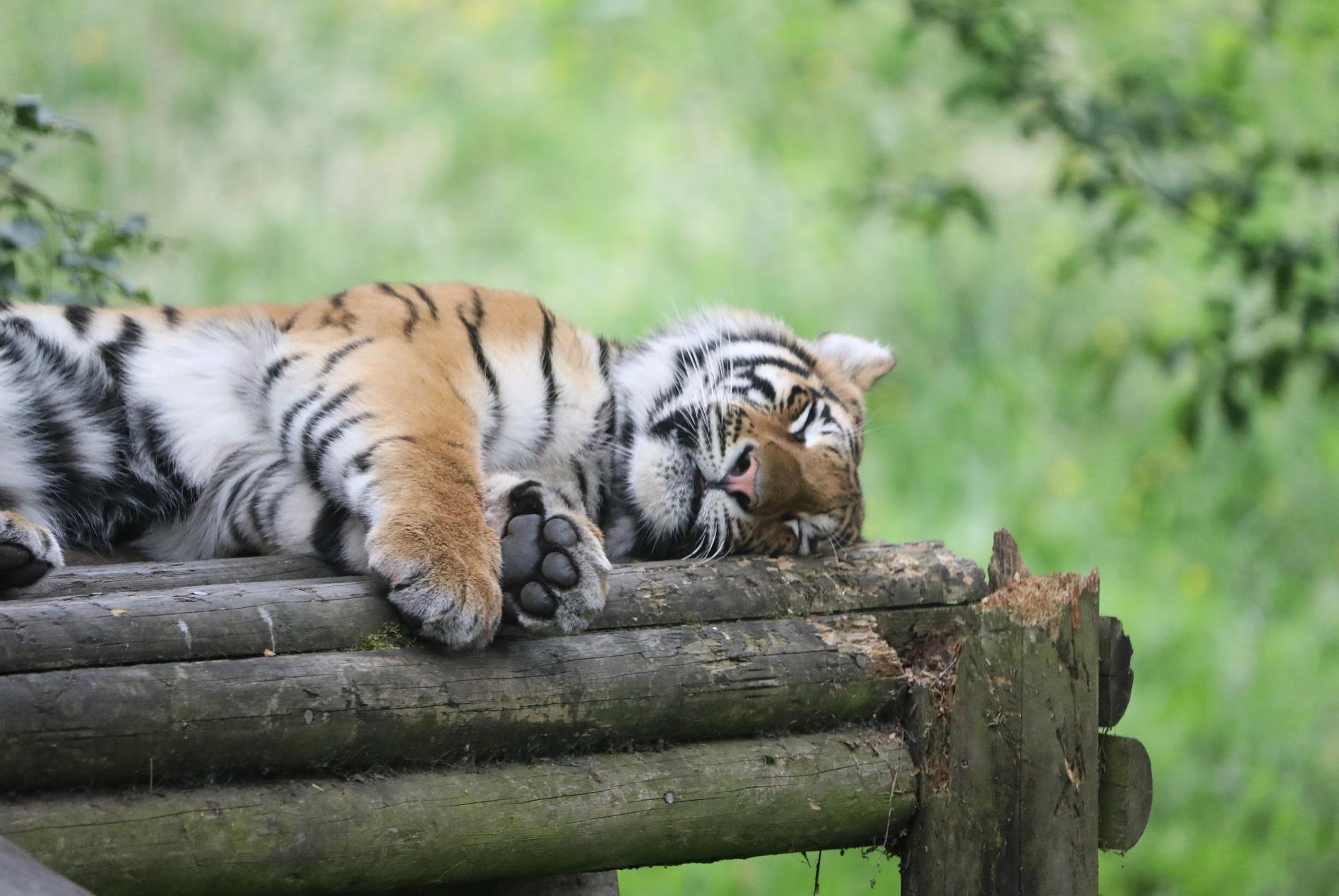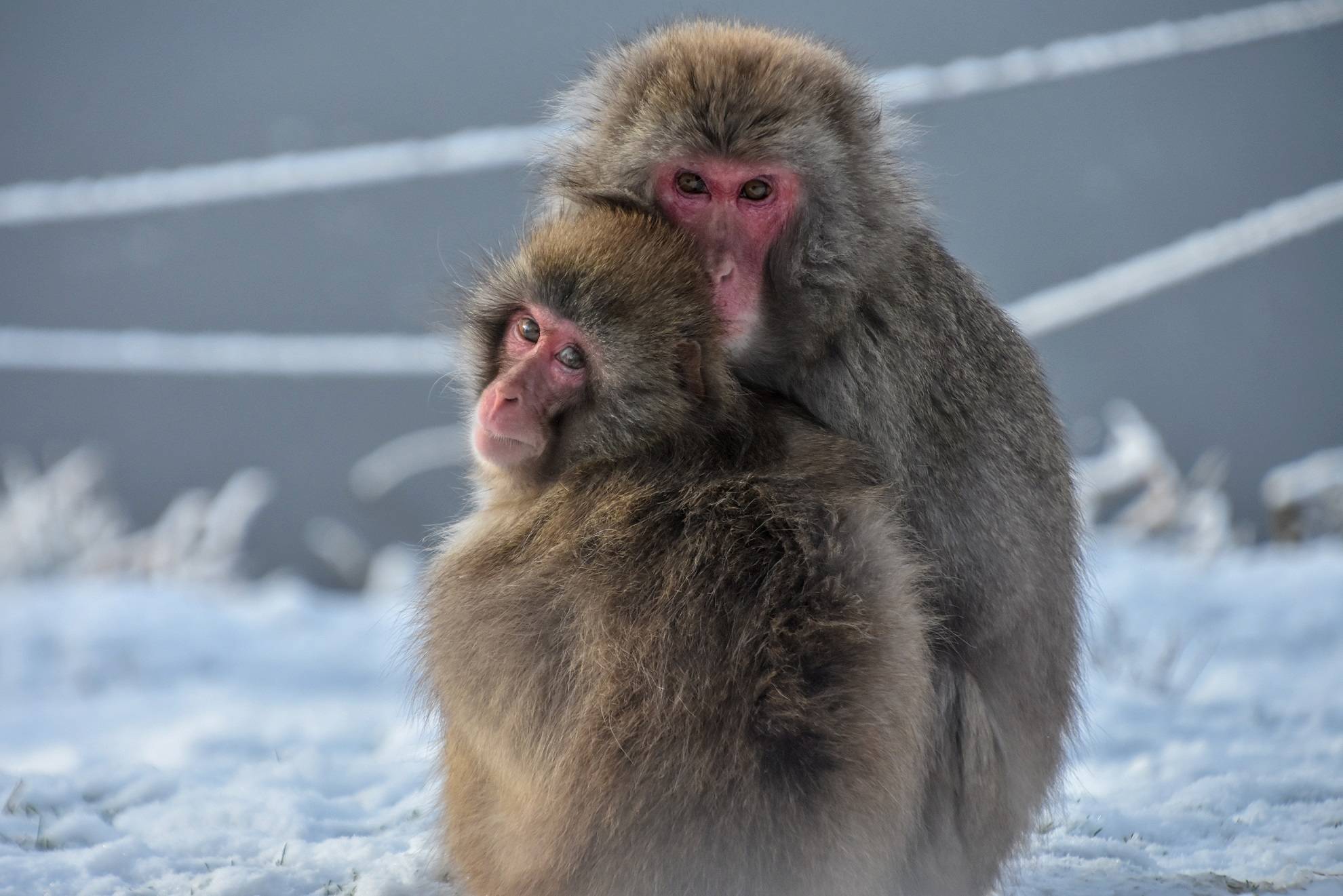Amur tiger
Panthera tigris altaica

We have three Amur tigers here at the park - Dominika, Botzman and Nishka.
Dominika, our eldest female, was born here in May 2009 and our adult male Botzman arrived in October 2020. The pair welcomed three cubs in 2021, with Nishka still living alongside her mum at the park.
To ensure the welfare of our tigers, we rotate them between two habitats. As part of this, Botzman stays separate from the females.
Amur tigers were once called Siberian tigers. Their name changed in the 1990s to reflect their disappearance from Siberia. They are currently limited to isolated pockets of Russia's Amur River valley and China's north-eastern border.
They faced near-extinction in the 1940s. They remain Endangered despite experiencing some recovery through dedicated conservation.
The estimated wild population is only 450 - more Amur tigers now live in zoos than in their natural habitat.
Population
Stable
Diet
Carnivore
Habitat
Mountains
Fact file
The Amur tiger (Panthera tigris altaica) is the largest of all the big cats
They are apex predators and powerful hunters, preying on wild boar and deer. In rare instances, they have even been known to take on bears
Each Amur tiger has a unique stripe pattern, just like human fingerprints
They live in very coldest regions. To survive the harsh winters, they have thicker fur than other tiger subspecies and a layer of fat for insulation

How we're helping
Like all the animals in our care our tigers are amazing ambassadors for their relatives in the wild and help hundreds of thousands of people connect with nature every year. They encourage visitors to learn about the threats facing wildlife and the action they can take to help create a world where nature is protected, valued and loved.
As a wildlife conservation charity, we care for the animals here at the zoo and work to protect species at risk around the world. From providing expertise in genetics and veterinary health, to protecting wild places with local conservation partners, and even restoring threatened species to the wild, we are active where we are needed most.
Find out more about RZSS conservation
